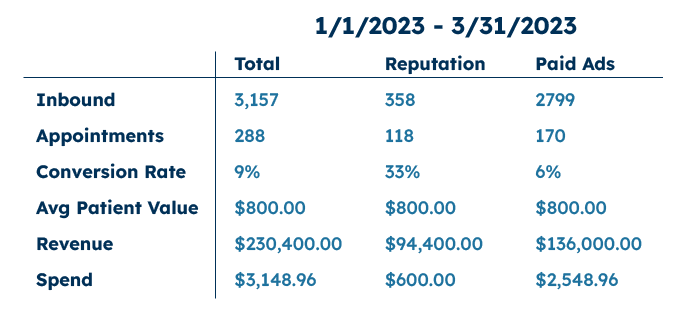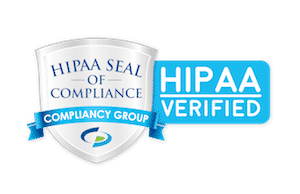Your healthcare organization’s growth and success don’t happen by accident, they are the result of strategic decisions you make, and for these decisions to be the right ones, you need to understand your patient cost per lead.
This is more than a number — it’s a revealing insight into the heart of your marketing strategy. Every dollar spent in attracting a potential patient’s attention has a cost, and understanding this is essential for growing your practice efficiently.
From the curious prospect clicking on your ad to someone who reads a blog post on your website, each interaction with your practice may lead to a lead (pun mildly intended). Knowing the cost behind each of them is the key to unlocking more efficient marketing strategies and ultimately, a successful healthcare organization. In other words, you need to recognize that behind every patient cost per lead, there’s an opportunity to connect, engage, and transform potential interest into lasting patient relationships.
Move Beyond Guesswork
Healthcare marketing used to revolve around best-guess efforts, especially when trying to assess the value of each campaign. You had data on spending, but linking that expenditure to concrete results or identifying the patients attracted by specific efforts remained a mystery.
These days, with all the latest technology at your fingertips, you can track your patient cost per lead. With tools like call and click trackers, you can now follow a patient’s response from an online ad, email, postcard, or even a billboard. And thanks to software integrations compliant with the Health Insurance Portability and Accountability Act (HIPAA), following a patient from their initial contact through their entire journey is not only possible but precise. You can determine the exact value your marketing campaign brings to your practice, eliminating guesswork entirely, and making truly informed decisions.
For example, if your paid ad campaigns represent the highest return and have the lowest patient cost per lead of all your marketing strategies, you’ll prioritize this strategy in your marketing budget going forward. If running an email newsletter has a patient cost per lead that’s much higher than your other marketing methods and doesn’t provide a reasonable return, you may want to look further into its results to find out if it’s a worthwhile investment in the future.
Patient Cost per Lead Calculation
When it comes to industry benchmarks, LinchpinSEO calculates that within the healthcare industry, the patient cost per lead can range widely from $36 to $286, with an average of $162 per lead. Meanwhile, another report shows a higher figure of $320 per lead for the healthcare sector. While these numbers represent broad averages across the industry, they can serve as useful starting points, giving you an idea of what you may expect as you begin to calculate numbers for your practice.
To calculate your patient cost per lead, use this simple math equation:
(campaign cost) divided by (number of patients who reach out from that campaign) = Patient Cost per Lead
Let’s see a practical example using the real numbers from one of our customers, as shown in their marketing report from January through March 2021.
($2,548.96 on Google Ads over three months) / (2,799 inbound calls from those ads) = $0.91 Patient Cost per Lead

It’s easy to see that this client spent $2,548.96 on paid advertising, and from those efforts, they received 2,799 calls. With less than $1 spent on advertising per inbound call, their efficiency is clear, but not all of those who called made appointments. The 170 patients who made appointments can be used to calculate another important number: the Patient Acquisition Cost (PAC).
($2,548.96 on Google Ads over three months) / (170 appointments) = $14.99 Patient Acquisition Cost
In this case, the PAC is $14.99 to acquire a patient that this customer estimates will generate $800 in revenue.
The same data also lays a foundation that allows you to calculate your return on investment (ROI) and make informed decisions for the long-term financial health of your healthcare organization.
Turn Data into Decisions
Understanding your patient cost per lead is more than just tracking a number. To make wise marketing decisions, you need to use all the insights you get. Patient cost per lead tells you how much you’re spending to attract a potential patient but it’s not the only factor to consider. Some leads may be more valuable than others, and it’s not always about spending less but spending smarter.
It’s necessary to consider your patient cost per lead in combination with other marketing metrics, like the cost to acquire a patient, and the long-term value of each patient, to build a more effective and efficient marketing strategy. However, this is usually easier said than done, and SocialClimb’s range of intuitive features can help you simplify and streamline the process.
With our call tracking, you can get a comprehensive view of how your marketing efforts translate into real-world interactions. By tracking inbound calls from various campaigns, you determine precisely which strategies are attracting potential patients, reducing your patient cost per lead. These invaluable insights allow for a more personalized approach, helping you optimize your strategies and ultimately leading to better patient engagement and satisfaction.
Also, with a comprehensive healthcare marketing platform that excels in automation, analytics, and tracking tools, SocialClimb enables you to focus your marketing efforts where they matter most and optimize your entire marketing strategy to yield higher returns and foster growth by transforming raw data into actionable insights. From call tracking to strategic guidance, our platform offers an intelligent approach to healthcare marketing that works with your unique needs.











